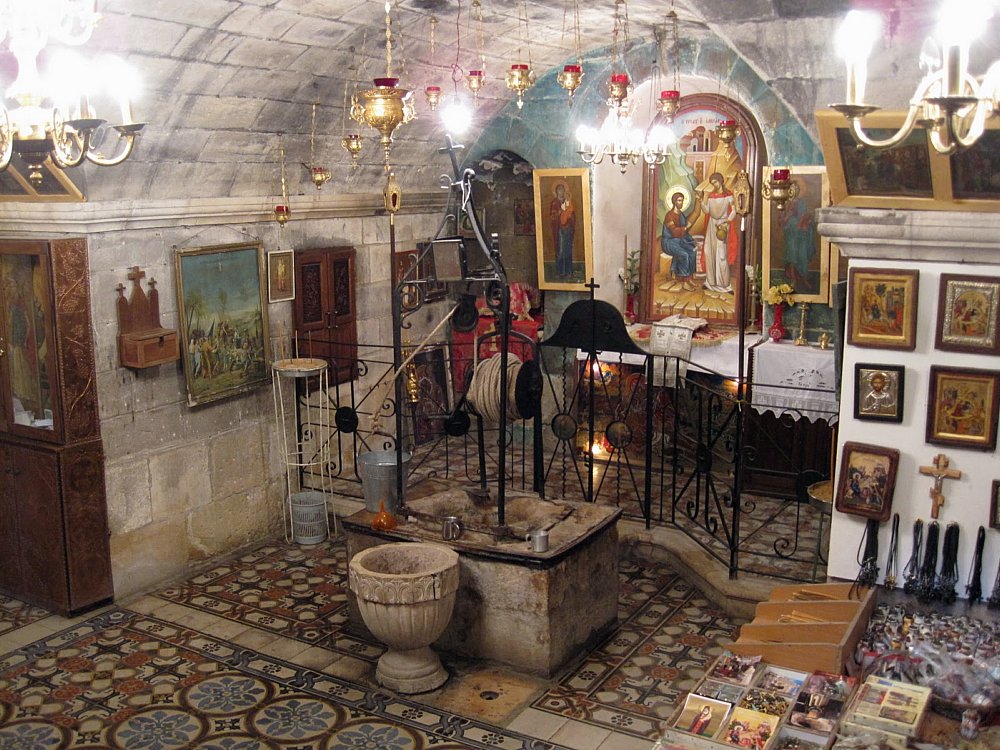Părintele Teofil Părăian (1929-2009), duhovnic iubit al Mănăstirii Brâncoveanu (Sâmbăta de Sus) din ținutul mirific al Făgărașului, a fost numit „omul bucuriei” și „duhovnicul tinerilor”. Nevăzător cu ochii, avea darul vederii în duh, sfătuind și odihnind pe cei iubitori să afle și să urmeze un sens înalt în viața lor duhovnicească. Iubitor și cunoscător al …
Continue reading Teofil Părăian, the father of serene thoughtsTestimonials, throughout
În anul 518 urca pe tronul Imperiului Bizantin Iustin I. Acesta fusese un simplu ţăran – după unii istorici avea origini daco-romane – însă, datorită fizicului său excepţional, reuşise să intre de tânăr în garda palatului imperial. Moartea împăratului Anastasie I (491-518) îl găseşte pe Iustin în funcţia de comandant al gărzii imperiale. Întrucât Anastasie …
Continue reading Justinian the Great, the emperor who never slept
Jacob’s fountain is the only place of Christian-Orthodox pilgrimage in Samaria. The fountain has a depth of 35 meters. A Greek monk who oversees her offers thirsty pilgrims in her fresh and cold water. The fountain was dug by Jacob on the land bought from Hemor (Emmor) Hevele (Genesis 33:18). Nomads used to have their …
Continue reading The fountain of Samaritan PhotiniSaint Patrick, the Enlightener of Ireland was born around 385, the son of Calpurnius, a Roman decurion (an official responsible for collecting taxes). He lived in the village of Bannavem Taberniae, which may have been located at the mouth of the Severn River in Wales. The district was raided by pirates when Patrick was sixteen, …
Continue reading St Patrick, the Bishop of Armagh and Enlightener of Ireland
St. Stephen Church in Jerusalem is a Greek Orthodox Church immediately outside the ancient city walls, between Lions Gate and Temple Mount. Coming out of Jerusalem through “Lions Gate” and descending in Cedar Valley, immediately on the right, is the church dedicated to St. Stephen the Archdeacon and First Martyr. According to local tradition, this …
Continue reading St. Archdeacon Stephen, the first martyrThe honor of the Holy Cover dates back to the 5th century, when the Cover (the mafion), the Belt and the Shirt (the tunic) of the Virgin Mary reach Constantinople. According to tradition, the Cover and the Belt were found in the tomb of the Holy Virgin of Ghetsimani Garden, when the tomb for the …
Continue reading Protection of the Mother of GodLilies of the Mother of God is a blessing to the foremost part of the village preserved from the island of Kefalonia, Greece. In the village church, every year, the same miracle happens: lilies placed on the icon of Virgin Mary, although completely dry, bloom for the second time, marvelously, so on August 15, when …
Continue reading Theotokos LiliesThe Monks Simeon, Fool-for-Christ, and his Fellow-Ascetic John were Syrians, and they lived in the sixth century at the city of Edessa. From childhood they were bound by close ties of friendship. The older of them, Simeon, was unmarried and lived with his aged mother. John, however, although he was married, lived with his father …
Continue reading Venerable Simeon of Emessa the Fool-For-ChristSorry, this entry is only available in Română.
Continue reading (Română) Părintele Paisie Aghioritul, un Sfânt contemporan – Viața și minunileThe report written by Pilate, governor of Judea by Tiberius, emperor of the Roman Empire, immediately after the Crucifixion The Report of Pilate was found in one of the Vatican’s libraries by a German student who was in Rome for theological studies. But the student did not find it too important to emulate. But as …
Continue reading Death of Christ – Part I







